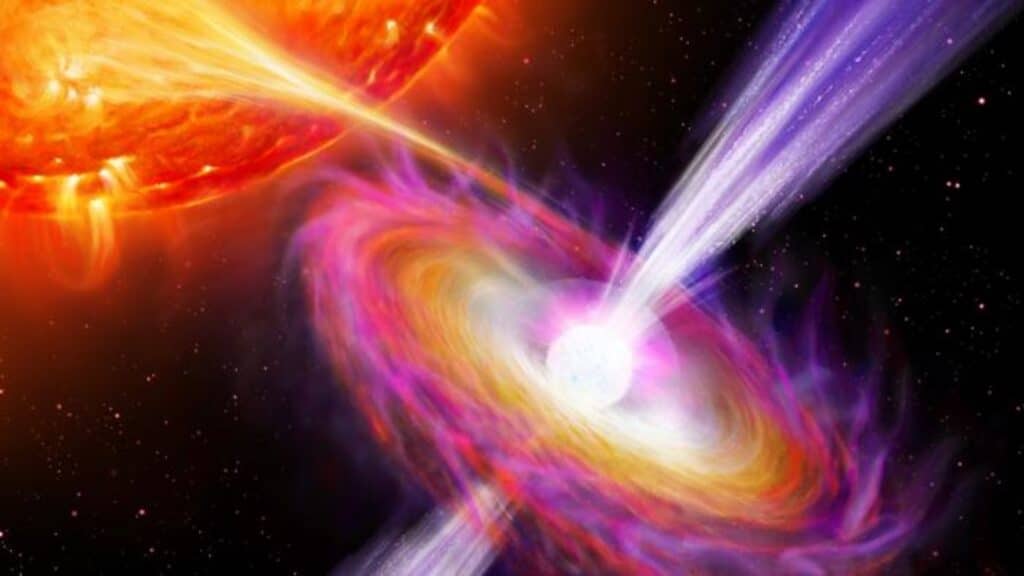In a cosmic game of “catch me if you can,” astronomers have finally managed to clock the breakneck speeds of fast-moving jets of matter blasting through space. These celestial speed demons, expelled by stars known as “cosmic cannibals,” are hurtling through the universe at a staggering 114,000 kilometers per second (255,010,737 miles per hour) — more than one-third the speed of light.
The eye-popping study, published in the journal Nature, sheds new light on these violent cosmic processes that play a crucial role in star formation and the distribution of elements essential for life throughout the universe.
“The explosions occurred on neutron stars, which are incredibly dense and notorious for their enormous gravitational pull that makes them swallow gas from their surroundings — a gravitational pull that is only surpassed by black holes,” says study co-author Jakob van den Eijnden, Warwick Prize Fellow at the University of Warwick’s Department of Physics, in a media release.
“The material, mostly hydrogen from a nearby star that orbits around, swirls towards the collapsed star, falling like snow across its surface. As more and more material rains down, the gravitational field compresses it until a runaway nuclear explosion is initiated. This explosion impacts the jets, that are also shot out from the infalling material and eject particles into space at very high speed.”
To measure the speed and properties of these jets, the team devised a clever method that involved comparing X-ray and radio signals picked up by the Australia Telescope Compact Array and the European Space Agency’s (ESA’s) Integral satellite.
“This gave us a perfect experiment,” says study co-author Thomas Russell, from the National Institute for Astrophysics in Italy. “We had a very brief short-lived impulse of extra material that gets shot into the jet and that we can track as it moves down the jet to learn about its speed.”
Over three days of observations, researchers witnessed 10 explosions and jets lighting up, allowing them to directly watch how a certain amount of gas got channeled into a jet and accelerated into space — a first for astronomers.
“Based on previous data, we thought the explosion would destroy the location where the jet was being launched,” notes study co-author Nathalie Degenaar, from the University of Amsterdam. “But we saw exactly the opposite: a strong input into the jet rather than a disruption.”
Researchers believe that the mass and rotation of neutron stars and black holes also play a role in shaping these powerful jets, which can also be produced by cataclysmic events such as supernova explosions and gamma-ray bursts.
This study not only provides a blueprint for future research into neutron stars and their jets but also has wide-reaching implications for many other areas of cosmic investigation. By understanding the mechanics behind these celestial speed demons, astronomers can gain valuable insights into the formation of stars and the distribution of life-essential elements throughout the universe.












